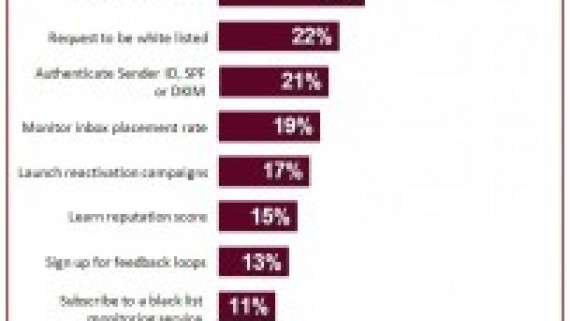Are You Keeping Your Marketing Automation Organized? 5 Key Steps to Go From Chaos to Clean
Your marketing automation is your closet, so you need to keep it organized! A poorly organized platform kills efficiency. Without good maintenance processes, you’ll find yourself with a messy system. The problem is that many just live with it because once things start going off the rails, it’s hard to right the ship.
Here are our 5 key recommendations for keeping your Marketing Automation Platform in tip-top shape:
And there you go. Great, right? Not so fast — there’s a lot to unpack for each of these and as always, things to consider. Each organization is different, but the same principles apply. A disciplined and consistent approach to staying organized pays off.
Documentation
Let’s start out of order and begin with documentation, because this one ties back to the rest. If it’s written down, nothing can go wrong, right?
Documenting key processes is critical to establishing good behaviors, especially when it comes to organization. Keep records of “the logic behind” why you made a decision or the “how-to” do certain tasks. This will go a long way in supporting an organized system.
Writing these things out establishes guidelines for the whole marketing organization and leads to further enhancements that will maintain organization and continue to drive efficiency. It’s absolutely essential to take a disciplined approach to maintaining clear documentation that is easy to find.
I also like to press the importance of descriptions and background. As a Marketo user, I leverage the description section that is available for assets. Taking a few extra minutes to explain what any one email, program, process, or report is for is a great resource to have when navigating through your instance — and certainly when it comes to things like troubleshooting and cleanup.
The most important pieces of documentation for an organized MAP are schedules for maintenance, step-by-step instructions for repeatable tasks, and policies based on agreed-upon best practices. We’ll cover all this in the maintenance processes section.
Naming Conventions
Naming conventions are a critical piece of staying organized. And who doesn’t love a super sweet naming convention? One that’s easy to recall when building new campaigns, is descriptive, and, best of all, useful when looking up specific programs and assets and quickly determining what they’re all about.
My preference is to start with a date (YYYY-MM-DD) so that items automatically sort themselves. For example, Marketo sorts alphabetically, so having the date at the start of each name lets you keep resources chronologically organized.
Another unquestioned requirement for your naming convention is program ID. Having your programs include a unique identifier is a powerful tool to find programs quickly using search features and in reporting.
To cement this into your organization, these should be agreed upon and understood names. And they need to be enforced! One of the main ways you can do this is by using program and asset templates that have your naming conventions built-in from the start, making it easier for things to stay on track.
Folder Structure
Think about folder structure as your shelves and bins. The goal here is to develop a method that is as easy to use as possible. Organization supports efficiency, so however you organize your MAP, keep it clear and simple.
I would suggest you use top-level folders for your largest categories, such as Operational Programs, Program Templates, Testing, and Marketing Activities. From there, you can begin to organize everything based on subcategories. So, for example, your key channels like webinars, gated content, and nurture programs would get their own folder. And the next level down? Folders by year, quarter, month, whatever feels right for your organization. It’s within these folders that you’ll put your programs (with your super-sharp naming conventions!).
Maintenance Processes
A great best practice is discipline around cleaning. Not just suggestions or recommendations, but actual defined, scheduled tasks that keep things in order. Think tasks actually created in your project management system with due dates and task owners, exciting stuff!
Every year, do a deep-dive into all smart lists in an effort to move, update, or delete items that aren’t needed anymore. Another example for Marketo users is the idle campaign deactivation process that Marketo automatically does each quarter. This process deactivates unused campaigns to free up processing. It’s a great push to review old programs and potentially archive unused ones (more on that in the next section!).
Another important maintenance process is to review changes to your standard operating processes. As time passes and new ideas come into play, things inevitably will change about how your MAP is organized. When is it necessary to go back to pre-existing programs and assets and update them based on new processes?
Take caution: don’t let a “clean freak” mentality get in the way here and suck up your resources. Take a good look at what’s in your instance and make an educated decision on what items need updating and what can be skipped.
It’s also recommended that when your folder structure is based on date of activity, each year you build out the next layer of folders and use that time to move more dated folders into an archive or larger holding folder, such as one containing an entire year’s worth of activity.
Archiving
Maybe this is the best part? Reminiscing about a really great program that was executed or remembering just how much work was actually done those two years back. Well, looking back is fun…
But then you’ve got to move that stuff into your archive! Keeping your old programs is always a good idea, since it helps to keep an historical record of how things were done, but archiving lets you keep your workspace clean.
I keep talking about closets, so think of archiving as the point when you stuff those old clothes into those vacuum bags and store them under your bed.
In terms of timing, that’s up to your organization and how far back you want to keep things around. In Marketo, remember that archiving just keeps things out of sight, so a quick click in your search filters will help you find archived items. It just takes some practice to remember that something you can’t find right away may just be archived.
From a holistic organization perspective, your gut check should be can your people find what they need quickly? Is it easy to find something they don’t know the location of? If you can answer yes to both of those questions, then you’re well on your way to having an organized marketing automation platform.





I had been out of the Marketo realm for a while, so there may have been updates to Marketo, I’d add about archiving: Make absolutely SURE all triggers and smart campaigns are deactivated so they won’t be activated unintentionally. Though they are archived, they can still react if they’re left running.